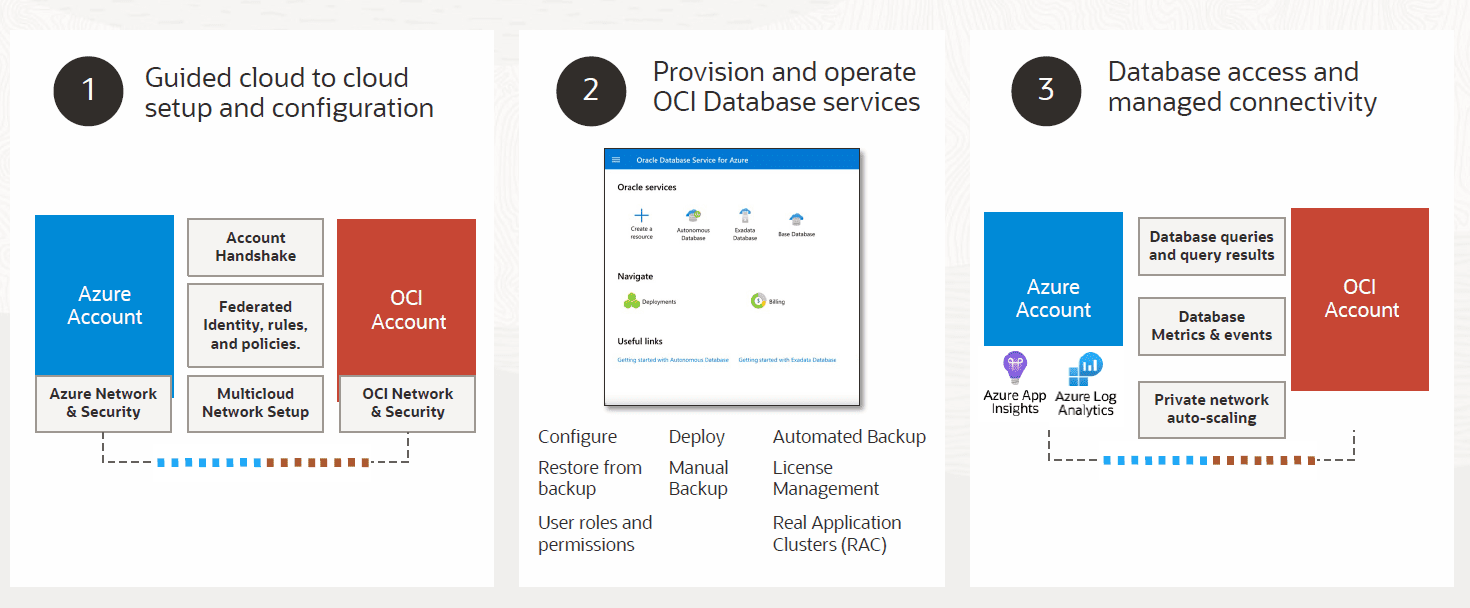The new service makes it possible to run Oracle databases without leaving the Azure environment.
Recently, Oracle has been busy connecting as many third-party environments as possible. Earlier this year, we reported on the Oracle Database API for MongoDB. Thereby, document-oriented databases from MongoDB were added to the Oracle environment (and vice versa). Oracle announced a similar development today. The company wants to further strengthen ties with Microsoft’s Azure environment through the Oracle Database Service for Azure. The two have been quite close for about three years due to an interconnect between OCI and Azure. Years ago, we also wrote a story about how interconnects work in practice.
At this time, there are eleven Azure Interconnect regions worldwide. Azure Interconnect regions provide extremely fast connections between the data centers of Oracle and Microsoft at locations where both parties have a presence. Connections have a latency of less than 2 ms and are secured with e2e encryption. Finally, there are no ingress or egress charges. The idea is that you can optimally link both infrastructures in this way.
Oracle databases within Azure
With today’s announcement, Oracle and Microsoft extend their cooperation. Oracle Database Service for Azure makes it possible to set up, run and manage Oracle databases from Azure. As is the case with the link to MongoDB, the new service allows users to remain in a familiar environment. You receive the user experience and console that’s native to Azure. You’re essentially using a database in OCI as an Azure resource. The new service is fully managed by Oracle. Nothing changes in the billing of either environment. Whatever you run on Microsoft is charged by Microsoft, even when set up through Oracle.
The goal is to provide joint customers with the best possible multi-cloud experience. Oracle intends to allow Azure customers to enjoy the benefits of Oracle databases on OCI within a familiar environment, without having to switch environments. You can simply log in with your Azure credentials and proceed to build databases. Exadata is among the possibilities. Later this year, HeatWave will also become available through the new service.
You can review the service’s schematic below. The image shows that Oracle Database Service for Azure is more than just a shell. A deeper integration with Azure VNets takes place in the background. It’s also possible to view logs and metrics on the Azure side. The new service brings the promise of multi-cloud one step closer for organizations that use Azure, but also want to (continue to) use Oracle databases in the same environment.

